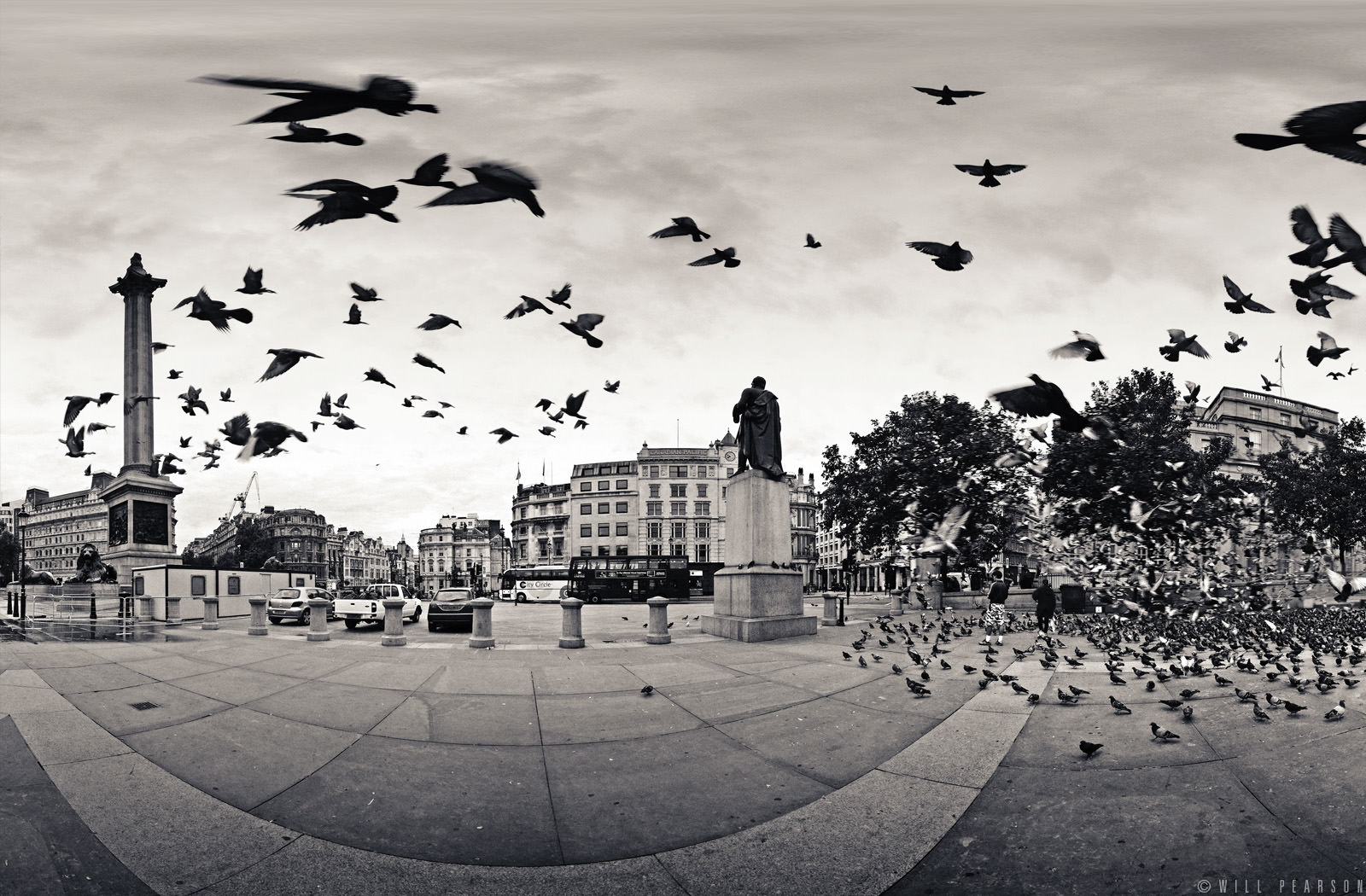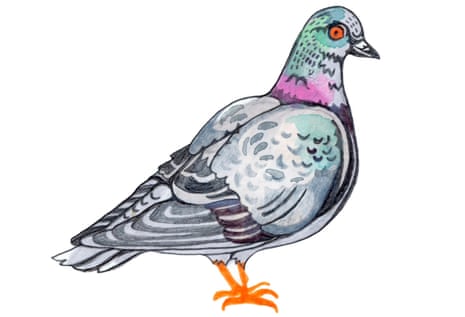Do Pigeons Have 360 Vision?
Pigeons do not have true 360-degree vision. Their eyes are positioned on the sides of their heads, allowing for nearly panoramic vision.
Pigeons are fascinating birds known for their incredible adaptability and navigation skills. They possess unique visual abilities that aid them in foraging and avoiding predators. While they can’t see a full 360 degrees, their eye placement grants them a broad field of view.
This helps them detect movement and potential threats from various angles. Pigeons can see ultraviolet light, enhancing their perception of the environment. Their vision plays a crucial role in their survival, making them exceptional flyers.
The Myth of Pigeon Vision
Pigeon vision is often misunderstood. Many believe pigeons see in a full 360 degrees. This idea sounds fascinating but lacks scientific backing. Let’s explore the common misconceptions and the origins of this myth.
Common Misconceptions
Many people think pigeons can see everything around them. This belief leads to some interesting misconceptions:
- Pigeons can spot predators from all angles.
- They can navigate without turning their heads.
- They have better vision than most birds.
These ideas create an image of pigeons as super birds. In reality, their vision is impressive, but not as magical as some think.
Origins of The 360 Vision Myth
The myth likely started from the unique eye structure of pigeons. Their eyes are on the sides of their heads. This placement gives them a wide field of view. However, they cannot see directly behind them.
Here are some key points about their vision:
| Aspect | Detail |
|---|---|
| Field of View | Approximately 300 degrees |
| Binocular Vision | Limited to about 30 degrees |
| Color Vision | Excellent, can see UV light |
This information clarifies their vision. Pigeons see a lot, but not everything. Understanding these facts helps correct the myth.

Credit: www.theguardian.com
Anatomy of Pigeon Eyes
The anatomy of pigeon eyes reveals fascinating features. These adaptations help pigeons see their world differently. Understanding their eye structure explains their incredible vision.
Unique Structural Features
Pigeon eyes have several unique features:
- Large corneas: These allow more light to enter.
- Dual fovea: This provides sharp vision in two directions.
- Color receptors: Pigeons can see many more colors than humans.
- Wide field of view: They can see nearly 360 degrees.
These traits help pigeons detect predators and find food. Their eyes are specially designed for survival.
Comparing Human And Pigeon Eyesight
Pigeons and humans see the world quite differently. Here’s a comparison:
| Feature | Humans | Pigeons |
|---|---|---|
| Field of View | About 180 degrees | Nearly 360 degrees |
| Color Vision | Three types of cones | Five types of cones |
| Focus Area | Single fovea | Dual fovea |
Pigeons can detect colors like ultraviolet. This ability helps them navigate and find food. Their wide field of view protects them from danger.
How Pigeons See The World?
Pigeons have a unique way of perceiving their surroundings. Their vision is different from ours. They can see colors and even ultraviolet light. This ability helps them navigate and find food easily.
Color Perception
Pigeons can see a range of colors. Their color vision is much better than humans. Here’s a quick comparison:
| Color Vision | Humans | Pigeons |
|---|---|---|
| Basic Colors | Red, Green, Blue | Red, Green, Blue, Yellow |
| Color Range | Short range | Wide range |
Pigeons can see colors more vividly. They spot differences in shades. This helps them find food and mates.
Ultraviolet Vision Capabilities
Pigeons can see ultraviolet (UV) light. This ability is rare in the animal kingdom. UV light is invisible to humans. Pigeons use UV light for various reasons:
- Finding food: Many seeds and fruits reflect UV light.
- Navigation: UV patterns in the sky help them fly.
- Identifying mates: Feathers may have UV patterns.
Pigeons’ UV vision helps them survive. They see the world differently than we do. Their unique sight gives them an advantage.
Debunking The 360 Vision Claim
Pigeons are often said to have 360-degree vision. This claim sounds impressive but is not entirely accurate. Understanding their vision helps clarify this misconception.
Scientific Evidence
Studies show that pigeons have excellent vision. They can see a wide range of colors and detect movement well.
Research indicates that pigeons have monocular vision. This means each eye can see a different image. They can see almost 300 degrees around them.
However, they lack true 360-degree vision. There is a small blind spot behind their heads. This area limits their field of view.
Here’s a summary of pigeon vision:
| Feature | Description |
|---|---|
| Field of View | About 300 degrees |
| Blind Spot | Small area behind their heads |
| Color Vision | Can see a wide range of colors |
Limitations Of Pigeon Vision
Pigeons face some limitations with their vision. They cannot see directly behind them. This blind spot can be dangerous.
- Blind spot affects predator detection.
- Depth perception varies with head movement.
- Night vision is poorer than some other birds.
These limitations show that pigeons do not have true 360-degree vision. Understanding these facts helps them appreciate how they navigate their world.
Navigational Skills of Pigeons
Pigeons are known for their incredible navigational skills. They can find their way home from great distances. Their keen senses play a big role in this ability. Let’s explore how vision and other factors help them navigate.
Role of Vision In Navigation
Pigeons have unique vision abilities. Their eyes allow them to see a wide range of colors. This helps them recognize landmarks from high above.
- Field of view: Pigeons can see nearly 360 degrees.
- Depth perception: They can judge distances well.
- Color vision: They see ultraviolet light, which humans cannot.
This advanced vision helps pigeons spot familiar places. They can navigate through complex environments easily.
Magnetic Field Perception
Pigeons can sense the Earth’s magnetic field. This ability aids their navigation. They use it to determine direction, even on cloudy days.
| Magnetic Sensation | Function |
|---|---|
| Magnetoreception | Helps detect magnetic fields for navigation. |
| Iron particles | Located in their beaks, assist in sensing direction. |
The combination of vision and magnetic perception makes pigeons extraordinary navigators. They can travel hundreds of miles and still return home. This remarkable ability makes them unique in the animal kingdom.

Credit: www.willpearson.co.uk
Implications of Pigeon Vision Research
Pigeon vision research opens doors to amazing discoveries. Understanding how pigeons see helps in various fields. This research can influence technology, evolution studies, and even conservation efforts.
Applications In Robotics
Pigeons have unique vision abilities. Researchers study these to improve robotic systems. Here are some applications:
- Navigation Systems: Pigeon vision aids in developing better GPS.
- Obstacle Detection: Robots can learn to avoid obstacles like pigeons do.
- Surveillance Drones: Enhanced vision in drones for better monitoring.
| Application | Description |
|---|---|
| Navigation Systems | Robots use pigeon-like vision for precise navigation. |
| Obstacle Detection | Robots mimic pigeon vision to spot obstacles. |
| Surveillance Drones | Drones improve visual capabilities for effective surveillance. |
Insights Into Avian Evolution
Pigeon vision provides insights into bird evolution. Scientists study these features to understand how birds adapt. Key points include:
- Vision Adaptations: Birds developed a unique vision for survival.
- Color Perception: Pigeons can see a wider range of colors.
- Predator Evasion: Enhanced vision helps avoid predators.
These insights help explain how birds evolved. Understanding vision shapes our knowledge of nature. Pigeons are more than just city birds; they are a key to understanding evolution.
Protecting Pigeon Habitats
Protecting pigeon habitats is vital for their survival. Urban areas pose unique challenges. Understanding these challenges helps in effective conservation efforts.
Urban Challenges
Pigeons thrive in cities, but face many obstacles:
- Loss of nesting sites: Buildings replace natural habitats.
- Pollution: Air and noise pollution affect their health.
- Food scarcity: Urban diets can be harmful and limited.
- Predation: Cats and other predators threaten pigeons.
These challenges can reduce pigeon populations. Immediate action is necessary to create safer urban environments.
Conservation Efforts
Various organizations work hard to protect pigeon habitats:
| Organization | Efforts |
|---|---|
| BirdLife International | Advocates for habitat protection. |
| Local governments | Implement urban planning for wildlife. |
| Community groups | Organize clean-up and nesting site programs. |
Community involvement is key. Simple actions can make a difference:
- Provide safe feeding stations.
- Create nesting boxes.
- Reduce pesticide use.
- Support local wildlife initiatives.
Every small effort adds up. Protecting pigeon habitats ensures their future in urban landscapes.
Fascinating Avian Secrets Yet To Be Unveiled

Credit: www.theguardian.com
Pigeons are remarkable creatures with incredible abilities. Their vision is one of the most captivating aspects. Do they really have a 360-degree vision? Researchers are eager to uncover the truth. Many fascinating secrets about bird vision remain hidden.
Future Research Directions
Scientists are excited about future studies on pigeon vision. Here are some potential areas of exploration:
- Understanding the structure of their eyes.
- Exploring how they perceive colors.
- Investigating how they detect movement.
- Studying their depth perception abilities.
These directions can reveal more about their unique vision. Advanced technologies may help researchers see how pigeons view the world.
Mysteries of Bird Vision
Bird vision is complex and fascinating. Here are some mysteries still not fully understood:
- Color Perception: Birds can see a wider range of colors than humans.
- Ultraviolet Light: Pigeons can detect UV light, which is invisible to us.
- Field of View: Their eyes are positioned to cover almost all angles.
- Motion Detection: Birds can see rapid movements that humans might miss.
Unraveling these mysteries can shed light on avian biology. Understanding bird vision may also help in conservation efforts.
Frequently Asked Questions
Do Pigeons Really Have 360-degree Vision?
Pigeons have nearly 360-degree vision due to their eye placement, allowing them to see in all directions.
How Do Pigeons See The World?
Pigeons possess excellent color vision and can detect ultraviolet light, enhancing their perception of the environment.
What Advantages Does Pigeon Vision Provide?
This unique vision helps pigeons avoid predators, navigate effectively, and find food in their surroundings.
Can Pigeons See In Low Light?
Pigeons have good night vision, enabling them to see well in low-light conditions and adapt to changing environments.
Final Notes of Can Pigeons See 360?
Pigeons can see nearly 360 degrees around them. Their eyes are positioned on the sides of their heads, giving them a wide field of vision. This unique eye placement allows them to spot predators and other threats quickly.
However, they do have a small blind spot right in front of their beak. Despite this, their ability to see in different directions helps them navigate and avoid dangers effectively.
Pigeons also have excellent color vision, enabling them to see a range of colors that humans cannot. This combination of traits makes them well-adapted to their environment.







